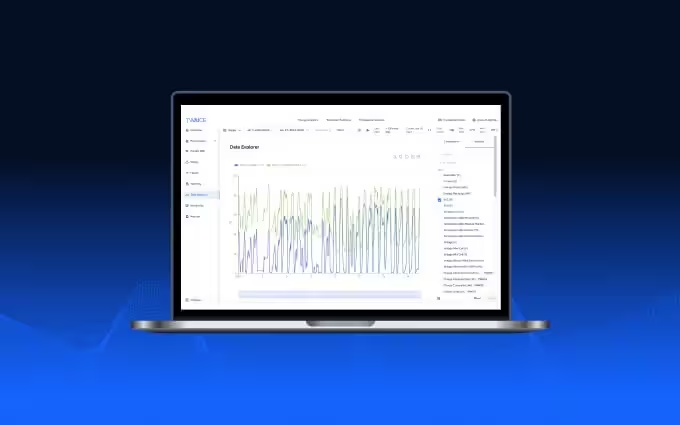Improve Battery System Design with Battery Simulation Models
Batteries are a key technology in the transition to carbon-free mobility. When it comes to designing battery systems for electric products, batteries must meet certain requirements that must still be met after years of operation, in order to avoid jeopardizing the intended business case and damaging companies. TWAICE's simulation models help engineers make the right decisions fast when designing a battery system, leading to reduced risks, improved reliability, and faster time to market.

Improve Battery System Design with Battery Simulation Models
Batteries are central to the transition to carbon-free mobility. Mercedes-Benz is just the latest in a long line of companies committing to an all-electric product line-up. Outside the automotive industry, these batteries are already a key technology.
When developing products with batteries, whether electric vehicles or energy storage systems, it’s vital to choose the right battery from the offset. TWAICE’s battery simulation models help engineers make the right decisions fast when designing a battery system, leading to reduced risks, improved reliability, and faster time to market.
When engineers are designing battery systems for electric products, the battery must meet certain requirements, including having the right configuration to fit in the space available and providing the power and energy capacity required for the use case. Above all, these requirements must still be met after years of operation, not just for the first couple of years. Products that deteriorate after a few years of use could jeopardize the intended business case and damage companies’ reputation.
The requirements that need to be met when developing a battery can be summed up into two central questions: As well as ensuring safe operation, what energy and power capabilities does my battery need to suit my product in the best way, and how can I ensure that these capabilities are provided over the entire lifetime of the product?
These can be broken down further:
- What cell format and chemistry suit the requirements best?
- How much space is available in the application and what does this mean in terms of how many cells I can fit into this space?
- What cooling system can I use?
- How does aging influence my power and energy capability and what implications does this have for my battery design?
- How will the load profile influence aging? For example, will a high charge current lead to fast aging of the cell. Can I reduce it and still make my customer happy?
- When using my chosen cell for my operating strategy for the specific application, how likely am I to achieve the warranty conditions required for the battery?
Batteries could be tested in various conditions to find the answers to these questions. This would, however, be very time intensive, costly, and would considerably slow down the time until the product can go to market. Battery modeling is therefore used to reduce the need for physical testing, which reduces the costs involved and speeds up time to market.
The TWAICE Battery Model
The TWAICE battery cell model is a coupled electrical, thermal, and aging model. Electric, thermal & aging factors influence each other (for example, operating a battery in higher temperatures will usually lead to faster aging), therefore taking all these factors into account provides a more realistic result than with a non-coupled model (or with a model that does not take aging into account, for example).
The electrical model simulates the electrical performance of the cell, for example voltage and State of Charge. The thermal model simulates the temperature of the cell. The aging model simulates the calendric and cycling performance of the cell (expressed in the form of State of Health capacity and State of Health resistance).
All cells behave uniquely, therefore the TWAICE battery experts parameterize each model specifically for each cell. For every combination of format and chemistry, the parameters of the model change as a different cell behavior must be reproduced. This means that TWAICE offers simulation models that are tailor-made for customers for their specific use cases, although the models are based on the same technology.
The electric, thermal and aging components of the TWAICE battery model are constantly updated with the most recent technological developments. A new version of the model is released every quarter to ensure continuous improvements in accuracy and usability. The latest version (October 2022) includes, for example, the introduction of float current measurements in the aging model and a complete update of the electrical model with an adjusted model design and measurement fitting technique.
Advantages of the TWAICE battery model
The TWAICE battery models assist engineers in finding the optimal system design for their specific use case. With the TWAICE battery models, you can:
Select the optimal cell
Simulate the cell’s aging behavior to understand how different battery cells will age under different operating conditions. This assists engineers in selecting the most suitable cell for the use case.
Avoid oversizing
Companies often oversize battery systems to ensure they have enough power and energy for the long-term. This means that more cells and components are needed, leading to increased costs. Simulating battery performance to understand battery degradation means that oversizing margins can be reduced, therefore saving costs.
Optimize BMS functionality
Identify the most optimal operating conditions for the battery to configure battery management systems and use as input for warranties.
How can you use the TWAICE battery model?
Use of a simulation tool such as Matlab Simulink is required to use the TWAICE battery model. Simulations can be carried out in two ways: in the Simulation Study Automation Toolkit which can be used with Excel, or directly in a simulation tool. Users can provide different data inputs:
- Time series: this dictates the timeframe of the model – whether 10 months or 10 years
- Ambient temperature: the outside temperature in which the battery operates, e.g. 30 degrees Celsius
- Current or power: the load profiles the battery should operate with, for example charge and discharge profiles.
At each time step, the parameterized model then processes the data input and outputs a corresponding electrical, thermal, and aging response in the form of current, voltage, state of charge, temperature, state of health and so on.
These results can be analyzed to understand, for example, how the chosen load profile and temperature condition influence the cell's aging and hence usable power. Or, when using the model in a system simulation environment, it can be used to feed the information to other models, for example the electric motor.
With the Simulation Study Toolkit, you can run these simulations directly in Excel. You can add multiple simulations to a queue, and they are automatically run one after the other, meaning you do not need to input any data into Matlab/Simulink. The results are saved automatically for you to check out anytime. By clicking on any of your simulation results, you will automatically see a visualization plot so you can easily read and interpret your results, speeding up your decision process.
Your benefits
- Run multiple simulations with minimal effort, helping you easily design, carry out and interpret large simulation studies.
- Get a clear overview of all your simulations in a list to check anytime or share with colleagues, and download them in .mat, .csv and .xlsx.
- Run simulation studies even if you are not an expert in Matlab or Simulink.
Conclusion
Battery simulation models are fundamental in speeding up the battery testing process, providing valuable insights into battery aging and performance at a fraction of the cost. The TWAICE battery models assist engineers in finding the right battery cell for their use case quickly and easily. With the coupled electric-thermal-aging battery model combined with the Simulation Study Toolkit for maximum user-friendliness, engineers can get the results they need quickly, speeding up battery decisions and ultimately speeding up time-to-market of products.
Sign up for the next live group demo and learn how TWAICE can transform your BESS operations. In just 30 minutes, you’ll get a demo of key features and use cases, and engage with our product experts for a live Q&A.




.avif)
